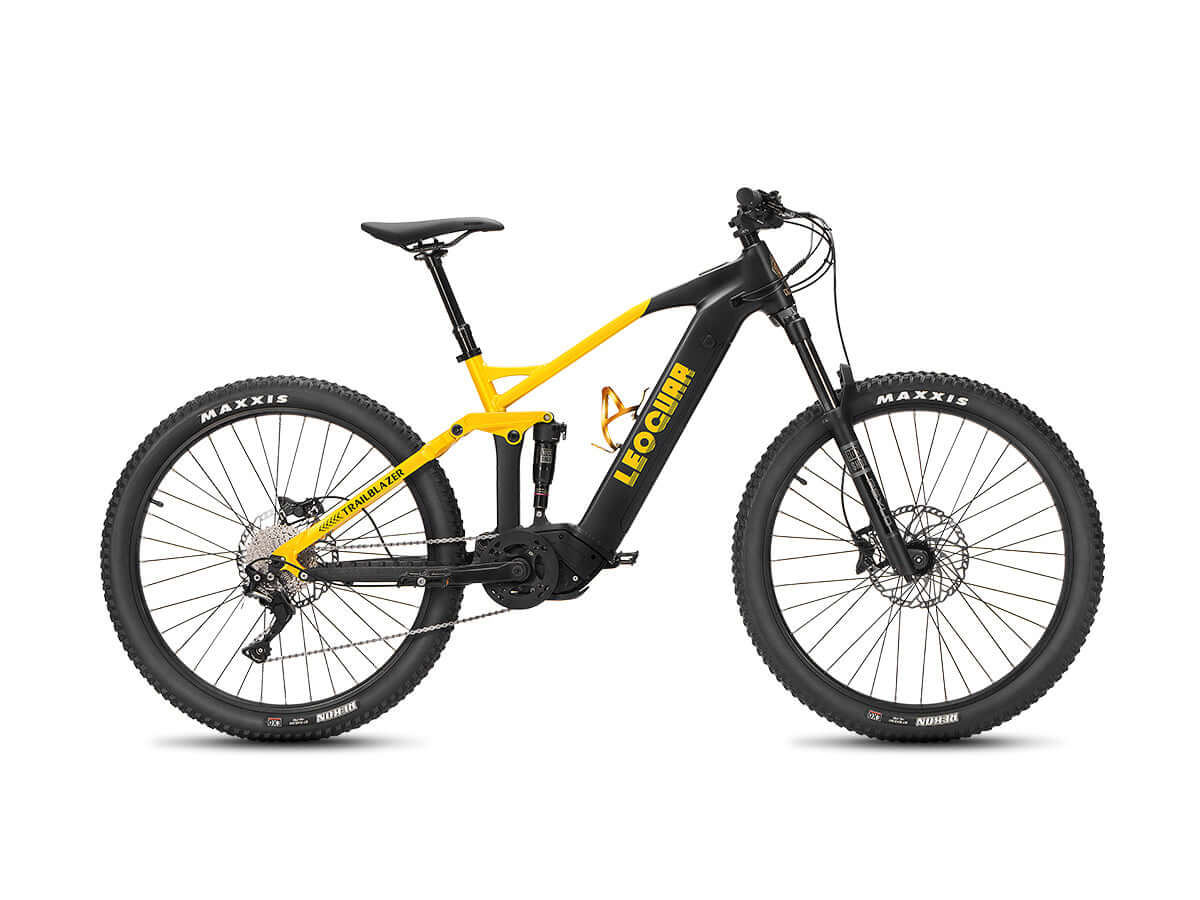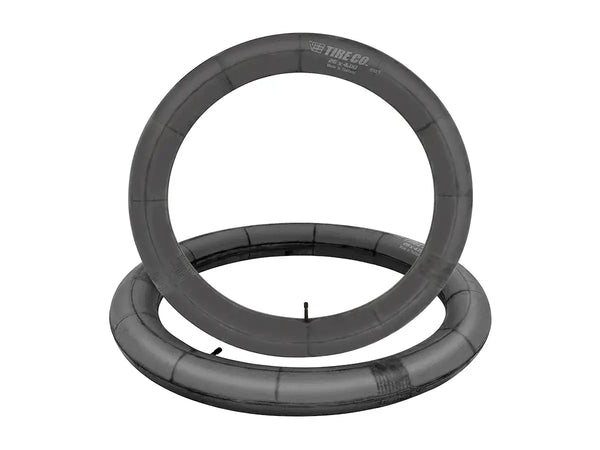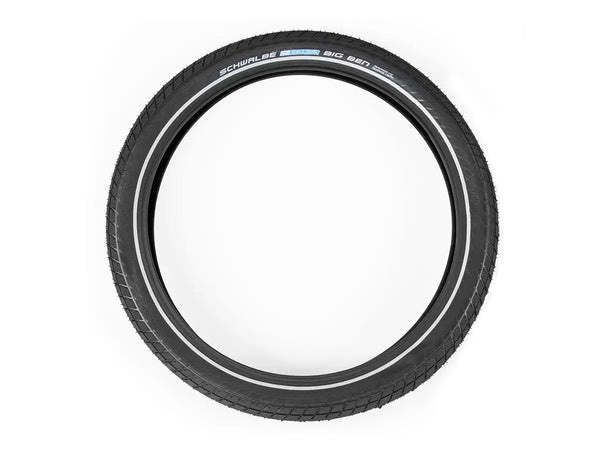
Electric Bike Tire Guide: Choice Affects Your Ebike’s Ride
Why Ebike Tires Are Different
Your electric bike tire is one of its most critical parts for both safety and performance. While it might seem easy to use a standard bicycle tire, it's a mistake we strongly advise against. An e-bike places unique demands on its tires that regular ones simply aren't built to handle. Understanding these differences is the first step to making a smarter, safer choice. There are three key factors that set e-bikes apart:
Extra Weight: An electric bike is much heavier than its non-electric counterpart. The motor, battery, and a stronger frame add a lot of mass. On average, e-bikes can be 20-40 lbs (9-18 kg) heavier. This extra weight puts more stress on the tire's structure, requiring stronger casings and sidewalls to maintain stability and prevent failure.
Higher Speeds & Torque: The help from an electric motor means you reach and maintain higher average speeds. More importantly, the instant torque from the motor during acceleration puts huge rotational force on the tire. This combination speeds up tread wear and demands a rubber compound that can grip well under power, not just when coasting.
Increased Braking Forces: A heavier object moving at a higher speed requires more force to stop. When you pull the brake levers on an e-bike, a huge amount of stress is transferred to the small contact patch where the tire meets the road. A standard tire can deform or lose traction under these forces, increasing your stopping distance. To address these challenges, the industry developed "E-Bike Ready" tires. These are not just a marketing trick; they are certified to specific standards.
Look for an E25 or E50 rating on the tire's sidewall. This shows the tire is structurally approved for the demands of e-bikes with assistance up to 25 km/h or 50 km/h, respectively, according to the official ECE-R75 certification standard.
The Ebike Tire Trade-Off
In our experience, there is no single "perfect" electric bike tire. Every design is a compromise, a balancing act between three competing factors: Grip, Range, and Durability. Understanding this "trade-off triangle" is the key to selecting a tire that is perfect for you and your riding style. Instead of searching for the best tire, you should be searching for the best balance of features for your needs. Here's how we break it down:
Grip: This is your connection to the ground. Tires with high grip use softer rubber compounds and often feature more aggressive, knobby tread patterns. They provide superior traction and confidence, especially in wet weather or on loose surfaces like gravel and dirt. The trade-off is that this soft, sticky rubber wears out faster and creates more friction, which can reduce your battery's range.
Range (Low Rolling Resistance): This is all about maximizing efficiency. Tires optimized for range use harder rubber compounds and smoother, slicker tread patterns. This design minimizes friction with the pavement, allowing you to travel farther on a single charge and maintain higher speeds with less effort. As confirmed by extensive tests on e-bike tire rolling resistance, the compound and tread have a direct impact on battery consumption. The trade-off is a reduction in grip, particularly on wet or unpaved surfaces.
Durability: This is a tire's ability to resist punctures and wear over time. Durable tires feature thicker casings, robust puncture-protection layers (often belts of aramid or other tough materials), and long-lasting rubber compounds. This is especially important for e-bikes, where the higher weight and forces lead to more wear and tear. The trade-off can be a heavier tire and a stiffer, less forgiving ride feel. When choosing your next electric bike tire, think about which one or two of these attributes are most important for your daily rides.
Choosing Your Perfect Tire
With the trade-off framework in mind, let's break down the technical terms on a tire's sidewall. This practical guide will help you read a tire and match its specifications to your bike and terrain.
Reading the Sidewall
The most critical information about a tire is printed right on its side. You'll typically see two sizing formats:
- Imperial/French Sizing (e.g., 27.5 x 2.4): The first number (27.5) is the nominal wheel diameter in inches. The second number (2.4) is the tire width in inches.
- ETRTO/ISO Sizing (e.g., 62-584): This is the most accurate format. The first number (62) is the tire width in millimeters.
The second number (584) is the inner diameter of the tire in millimeters, which corresponds to the wheel rim's bead seat diameter. The most important rule is simple: The diameter must match your bike's wheel size. For width, you have some flexibility, but you must ensure the new tire fits within your bike's frame and fork without rubbing.
Matching Tread to Terrain
The pattern on your tire isn't just for looks; it's engineered for specific surfaces. Choosing the right tread is crucial for performance and safety.
| Tread Type | Best For | Characteristics |
|---|---|---|
| Slick/Smooth | Paved roads, city commuting | Low rolling resistance, maximum range, quiet operation. |
| Semi-Slick/Mixed | Pavement, light gravel, bike paths | A balanced center for speed with side knobs for cornering grip. |
| Knobby | Trails, mud, loose terrain | Maximum grip and control, highest rolling resistance. |
The Need for Puncture Protection
Getting a flat tire is always a hassle, but on a heavy e-bike, it can be a ride-ending event. Changing a rear flat on an ebike with a hub motor is much more difficult than on a standard bike. For this reason, we consider a high level of puncture protection a must-have feature for any electric bike tire used for commuting or utility. Look for terms like "puncture belt," "reinforced casing," or specific brand technologies that indicate an internal layer designed to stop glass, thorns, and other road debris.
Tubed vs. Tubeless
This choice affects both performance and maintenance.
Tubed: This is the traditional setup with a separate inner tube inside the tire. It's what most riders are familiar with. Installation is generally straightforward, and fixing a flat on the go, while difficult, requires basic tools and a spare tube.
Tubeless: This system uses a special rim and tire to create an airtight seal, eliminating the inner tube. A liquid sealant is added inside the tire, which automatically plugs small punctures as they happen. This offers superior flat resistance and allows you to run lower tire pressures for increased grip and comfort. The downside is that the initial setup can be more complex and messy.
Real-World Rider Scenarios
Theory is helpful, but let's apply it to real-world situations. We've created three common rider profiles to help you see how the "trade-off triangle" works in practice and find your ideal electric bike tire.
Profile 1: The Daily Urban Commuter
Needs: This rider's top priorities are reliability and safety. They need a tire that can withstand daily abuse from city streets without going flat. Good range is important for getting to and from work, and dependable grip in wet weather is a must-have for year-round riding.
Recommendation: Prioritize Durability and Range. Look for an e-bike rated tire with the highest level of puncture protection you can find. A semi-slick tread pattern offers a great balance of low rolling resistance for efficiency and channels to displace water for wet grip.
Our Experience: For instance, we've found that on city streets littered with glass and debris, a tire with a minimal 3mm protection belt is a baseline. We once tried a standard, unprotected tire on a commuter e-bike for a month and experienced three flats, a stark contrast to the zero flats experienced with a dedicated e-bike touring tire over the same routes.
Profile 2: The Weekend Trail Explorer
Needs: For this rider, it's all about control and fun on the trail. Grip is the absolute number one priority for confident handling on dirt, roots, and rocks. Durability against sidewall cuts and impacts is also crucial. Range is a secondary concern, as the ride is about the experience, not the distance.
Recommendation: Prioritize Grip. Look for a tire with an aggressive, widely-spaced knobby tread. A wider profile (2.4" or more) will provide a larger contact patch and more cushion. Reinforced sidewalls are essential to prevent damage from rocks. A tubeless setup is highly recommended here, as it allows for lower pressures, which dramatically increases traction and virtually eliminates pinch flats. As seen in a dedicated e-MTB tire test, specific front and rear tire designs can further optimize performance.
Profile 3: The All-Weather Delivery Pro
Needs: This bike is a tool for work, and downtime is lost money. Durability is king; this tire must be as close to indestructible as possible. Next, all-weather Grip is non-negotiable for safety in rain, sleet, or shine. Range is important for a long day of work, but not at the expense of getting a flat.
Recommendation: This requires a hybrid approach focused on toughness. Seek out a tire with the absolute highest puncture protection rating available (some brands offer 5mm+ thick belts). The compound should be engineered for longevity, and the tread should feature deep sipes (channels) designed specifically for displacing large amounts of water, ensuring a secure contact patch in the worst conditions.
Essential Ebike Tire Care
Choosing the right electric bike tire is only half the battle. Proper care is the key to maximizing its lifespan, performance, and safety. These simple habits will help you get the most out of your investment.
Perfect Your Tire Pressure
Tire pressure is the single most impactful adjustment you can make to your ride, and it's free. The correct pressure range, listed in PSI (Pounds per Square Inch) or Bar, is always printed on the tire's sidewall.
- Too Low: Leads to a sluggish feel, increased rolling resistance (draining your battery faster), and a higher risk of "pinch flats" or rim damage.
- Too High: Creates a harsh, bumpy ride, reduces the tire's contact patch (less grip), and causes the center of the tread to wear out prematurely. Check your pressure with a quality gauge at least once a week.

Perform Regular Inspections
Before each ride, give your tires a quick visual check. Once a month, perform a more thorough inspection. Look for:
- Embedded Debris: Small pieces of glass or sharp stones that are stuck in the tread can work their way through over time. Carefully remove them with pliers.
- Cuts or Cracks: Inspect the tread and sidewalls for any damage. Deep cuts or cracking from sun exposure (dry rot) are signs that the tire's integrity is compromised.
- Uneven Wear: If one area of the tire is wearing much faster than others, it could be a sign of improper pressure or alignment issues.
Know When to Replace
All tires wear out. Replacing them in a timely manner is crucial for safety. It's time for a new electric bike tire when you see:
- Worn Tread: Most tires have "wear indicators," which are small holes or bars in the tread. When the tread wears down to the level of the indicator, it's time for a replacement. If your tire doesn't have them, replace it when the tread pattern is nearly gone.
- Frequent Flats: If you suddenly start getting more punctures than usual, it's a sign that the casing and protection layer are worn out and can no longer do their job.
- Visible Casing: If you can see the fabric threads of the tire's casing through the rubber, replace it immediately. The tire is on the verge of failure.
Frequently Asked Questions
1. Q: Can I use regular bike tires on my electric bike?
A: No, you should not use regular bike tires on an electric bike. E-bikes are heavier, faster, and generate more torque than regular bikes, which puts extra stress on tires. Regular tires aren't designed to handle these increased forces and may fail, compromising your safety. Always use tires specifically rated for e-bikes, marked with E25 or E50 certification.
2. Q: How often should I check my ebike tire pressure?
A: You should check your ebike tire pressure at least once a week. Proper tire pressure is crucial for safety, performance, and battery range. Low pressure increases rolling resistance and drains your battery faster, while high pressure reduces grip and causes uneven wear. The correct pressure range is printed on your tire's sidewall.
3. Q: What's the difference between tubed and tubeless ebike tires?
A: Tubed tires use a separate inner tube inside the tire, which is the traditional setup most riders know. Tubeless tires create an airtight seal with the rim and use liquid sealant to automatically plug small punctures. Tubeless offers better flat resistance and allows lower pressures for more grip and comfort, but setup is more complex than tubed systems.
4. Q: How do I know when to replace my ebike tires?
A: Replace your ebike tires when you see worn tread down to the wear indicators, frequent flats, or visible fabric threads through the rubber. Most tires have small holes or bars in the tread that serve as wear indicators. If you can see the tire's fabric casing through the rubber, replace it immediately as the tire is about to fail.
5. Q: What tire tread pattern should I choose for city commuting?
A: For city commuting, choose a semi-slick or mixed tread pattern. This design has a smooth center section for low rolling resistance and maximum range, with side knobs for cornering grip. This combination provides the best balance of efficiency for daily commuting while maintaining safety in wet conditions and when turning.











































Leave a comment